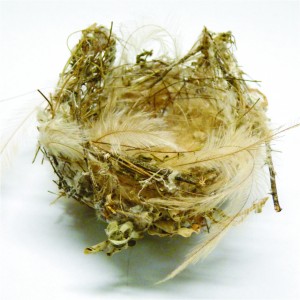Rangeland Biology and Ecology Seminars
April 29, Friday, 3.30pm at Charles Darwin University, Lecture Theatre HE, Alice Springs *
The structural and thermal properties of avian cup-shaped nests
Dr Caragh Heenan
Land for Wildlife Coordinator, Low Ecological Services P/L, Alice Springs
Incubation in birds is energetically demanding and the energy invested to maintain egg temperature can influence the outcome of a reproductive event and therefore the lifetime reproductive success of individuals. It is reasonable that heat loss can be minimised by optimising the physical structure and location of the nest. I assessed the structural and thermal properties of nests across 36 species of Australian passerines, assessing variables against parent mass, egg and clutch size, once accounting for phylogenetic relationships. The surface area and volume of the nest cup increases with the surface area and volume of the clutch, as well as the size of the incubating parent. Structural support for the parent and clutch is the primary factor driving nest thickness. A change in nest thickness with the combined mass of the parent and clutch has a direct influence on the conductance of nests, such that structurally adequate nests achieve a lower thermal conductance (higher insulation) than expected, as they increase in size. When exposed to wind or rain, the rate of heat loss from the nest increases, which is likely to have direct consequences on the energetics of the incubating parent. However, birds breeding in warm and wet conditions select materials for nest construction that have a high thermal conductivity to facilitate the nest drying process through rapid evaporation and reduce the overall cost of incubation. This provides confirmation that selecting a sheltered nest site and constructing an appropriate nest to minimise heat loss is important for avian reproductive success.
* Directions: Take the second CDU entrance along Grevillia Drive next to the childcare centre (not the main Centralian college entrance), and go past the old CDU plant nursery. The HE building is straight ahead on the left next to the grape vines and in front of the oval. There is parking in front of the building. The lecture theatre is on the ground floor just inside the doors to the right. Alternate entry to the room for late arrivals is upstairs into the back of the room.
Categories:
Bird, Nest, Physiology, Presentation
